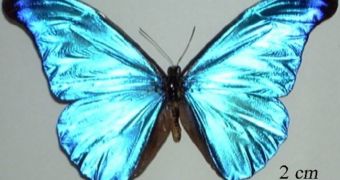Scientists have been trying to create a color e-reader for a long time, but the extreme demands that such a goal imposes of existing technology has meant that progress was slow. It was only recently that a group of experts managed to create a prototype of an electronic reader with a color display, but they admit to having turned to nature for inspiration. The team says that the iridescence displayed by butterflies' wing is what gave them the idea to pursue this goal, and to reverse-engineer it into advanced electronics, LiveScience reports.
The new device is called Mirasol and is designed and engineered by Qualcomm MEMS Technologies. The innovative thing about the new device is that it does not transmit light in the way usual LCD do. Instead, they reflect light in specific manners, which make the person viewing the device believe the screen is actually displaying colors. The downside is that the device thus only becomes readable in the sunlight. On the plus side, this offers unprecedented long battery life and energy savings, the company reports. It also says that it doesn't plan to stop at readers.
At this point, consumers constantly demand that ever single electronic device they use, no matter how small, have a color display, and so the company has a lot of fields to cover with the Mirasol technology. Another plus that will ensure the device is well received is its large autonomy, which is also something people are very interested in. Most consumers hate having to recharge their devices, mobile phones and mp3 players alike, several times per week, and are looking for replacements that could last one to two weeks on a single charge. Qualcomm believes that this will soon become possible with Mirasol.
“Looking at pretty structures in nature is not sufficient. What I want to know is, can we actually transform these structures into an embodiment with true utility in the real world?” asks Robert Cohen, who is a chemical engineer at the Massachusetts Institute of Technology (MIT). Scientists at the company reveal that their new technology is based on a theory known as interferometric modulation (IMOD). The device features tiny flexible membranes that are electrically-charged, and placed on top of a mirror surface. This mimics the properties of the natural crystals that cause iridescence in the butterfly wings. This allows the e-reader to do without a backlit screen.

 14 DAY TRIAL //
14 DAY TRIAL //